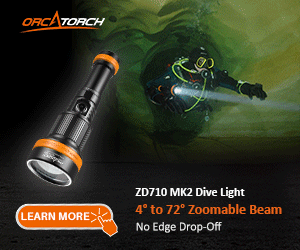I'm not aware of any high temperature shut off feature for compressors. It's easy enough to avoid, though. Don't run your compressor for more than a couple of hours and don't run it during the hottest time of the day. Oh, and test every single tank!
You should move to Canada where any compressor used for fire service or commercial diving must have a high air temperature (HAT) alarm and low oil pressure (LOP) alarm. All compressors used for breathing air applications should have both and the manufacturers like Bauer, Nuvair, etc. can supply you with one.
All the Bauer compressors above a certain size come with the final stage head already drilled out for a temperature sensor or bimetal switch. The Bauer B-trox nitrox compressor comes with a HAT alarm on all four stages. You can retrofit a compressor with one if you have a PLC that can be modified to accept another input.
Upon checking your US fire service compressed breathing air standard NFPA 1989 they also require all fire service compressors to have a HAT and LOP alarm. Walk in to your local fire hall and ask them to show you the HAT alarm. Here are the NFPA 1989 clauses:
7.2.2 Oil-lubricated compressors shall be equipped with a
tamperproof, audible, high temperature alarm that shall shut
down the compressor at the temperature specified by the compressor
manufacturer.
7.2.3 Oil-lubricated compressors shall be equipped with a
tamperproof low oil level, low oil pressure, or both low oil level
and low oil pressure audible and visual alarm that shall shut
down the compressor if the oil level or the oil pressure drops
below the limit specified by the compressor manufacturer.
The reason that there is such a high failure rate for CO contamination in dive air (~ 3 percent of samples submitted) vs. the fire industry (~ 0.1%) is we have no oversight whatsoever of compressor installs, operation, maintenance, etc. Until that happens which I doubt it will in places like Mexico, Egypt, or the Maldives the only solution is for every diver to check each and every tank for CO contamination before use.
Fire halls in Canada and the USA have up to date well-maintained compressors and usually the operators whose colleagues also breathe the same air are trained in safe air production. Typical dive shop compressor in Mexico is an old ratty compressor with little to no preventative maintenance and certainly no regular air testing or CO monitoring. The operators learned how to run the compressor from the previous owner who learned from the previous owner. Bad habits are passed along.
If you want to read how compressed breathing air should be produced and monitored I'd recommend you purchase the new NFPA 1989 standard for only $35 and follow their recommendations for quality assurance.
NFPA 1989: Standard on Breathing Air Quality for Emergency Services Respiratory Protection
PADI pulled out of overseeing their affiliates air testing programs four years ago for liability reasons. I wouldn't be surprised to see their entire affiliate program go by the wayside with a few more court cases and settlements against them in this area. The elephant is out of the room.
---------- Post added March 10th, 2013 at 12:27 AM ----------
I recently left my regular LDS when they dropped their compressor maintenance contract and skipped the 1000 hour service.
I understand that PADI won't want to attach themselves to the liabilities of some sort of air quality assurance certificate. But, why not require their affiliates to have a compressor maintenance contract with a manufacturer certified maintainer? Some of these tank fillers do less maintenance on their life support air compressors than I do on my lawn mower. At least PADI could publish who does have a maintenance contract so that I could be an informed consumer when I travel to dive locations I'm unfamiliar with.
The agencies could also teach gas testing as part of a basic certification. A CO analyzer isn't much different to operate than an O2 analyzer for enriched air. Knowing how to test and what the acceptable limits are would be a beneficial skill set for all types of recreational divers.
PADI after the CO double fatality in Roatan, Honduras about six years ago has completely extricated themselves from anything to do with breathing air quality assurance for liability reasons. They will now defer to the local authority having jurisdiction regarding compressed breathing air quality which in the tropics means there is no standard and the individual diver becomes the local authority. As to whether or not PADI adopts a policy whereby it teaches in its open water course all divers to check their breathing air for CO contamination remains to be seen. I doubt it will happen.
Bauer Germany after the Maldivean CO fatality four years ago started up a PureAir program whereby it lists on its web site those dive shops and resorts which test their air quality on a regular basis (not sure of the interval). It is a start but it is Euro-centric and no operations are listed for North America.
BAUER PureAir
There will be no solution to this problem except for each and every diver to test their tank prior to diving it, or to find a compressor with a functioning inline CO monitor.
---------- Post added March 10th, 2013 at 12:47 AM ----------



